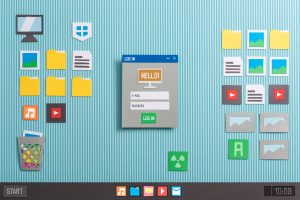
Web development has come a long way, with mobile devices now being one of the primary means of accessing the internet. As an app developer or a website owner, it is crucial to optimize user experience across various platforms, including iOS and Android. One effective approach to achieve this is by incorporating WebViews into your app, enabling you to embed web content seamlessly.
A WebView is essentially a component that allows you to display web content within your app. It acts as a mini-browser within your application, providing users with a familiar browsing experience while maintaining the look and feel of your app. With the increasing demand for cross-platform development, mastering the art of implementing WebViews can give you a competitive advantage.
One particular area where WebViews can greatly enhance user experience is the integration of third-party login services, such as Google Login. By allowing users to log in to your app using their existing Google credentials, you streamline the onboarding process and eliminate the need for users to create another account.
Implementing seamless Google Login support for iOS and Android using WebViews might sound complex, but with the right tools, it can be simplified. WebViewGold is a fantastic solution that enables you to convert websites into apps for both Android and iOS effortlessly.
WebViewGold offers a quick and simple solution to convert your website into a professional, native app. This allows you to leverage the power of WebViews without worrying about compatibility issues or spending extensive time and resources on app development.
To master cross-platform WebViews and support Google Login seamlessly, follow these steps:
1. Get WebViewGold: Start by downloading and installing WebViewGold from their official website. It’s available for both iOS and Android, making it an ideal choice for cross-platform app development.
2. Configure your app: Once installed, configure your app’s settings such as app name, icon, bundle identifier, and other preferences. WebViewGold provides an intuitive way to customize your app according to your branding and requirements.
3. Add Google Login functionality: WebViewGold supports loading web pages with JavaScript, making it possible to integrate Google Login within your app.
4. Enhance user experience: Customize the WebView appearance to match your app’s design and add additional features to enhance user experience. WebViewGold offers various options to modify the interface, such as navigation bars, pull-to-refresh, and offline support.
5. Test and publish your app: Before publishing your app, thoroughly test its functionality on both iOS and Android devices. Ensure that the Google Login flow works seamlessly and the WebView behaves as expected. Once satisfied, submit your app to the respective app stores for distribution.
By mastering the utilization of WebViews and integrating seamless Google Login support, you can provide a consistent and user-friendly experience for your app users across both iOS and Android devices. With WebViewGold, the process becomes even more streamlined, allowing you to convert your website into apps effortlessly.
In conclusion, incorporating WebViews into your app and supporting Google Login is crucial in today’s mobile-centric world. WebViewGold provides a reliable and efficient solution for converting websites into apps and simplifying cross-platform development. Embrace the power of WebViews and deliver a seamless user experience for your app users.




